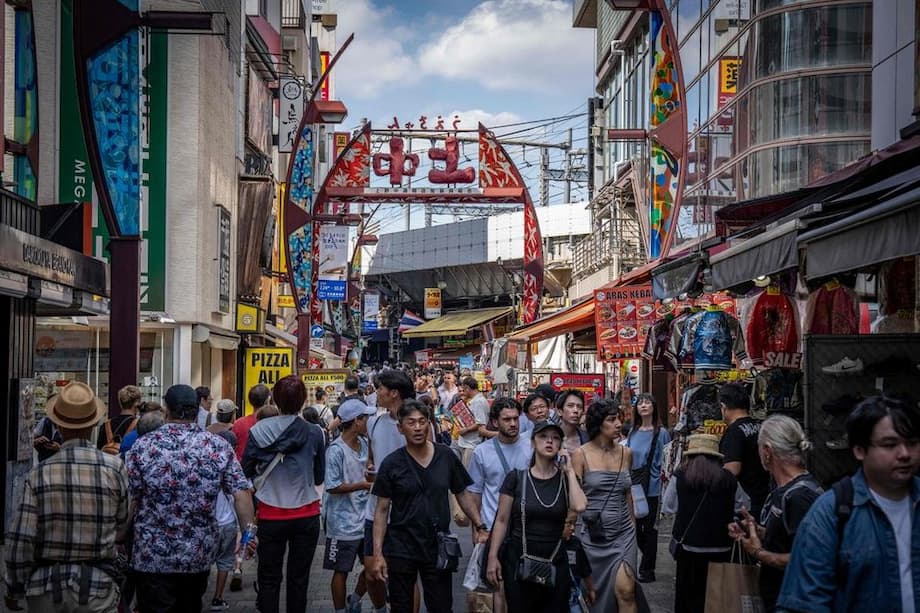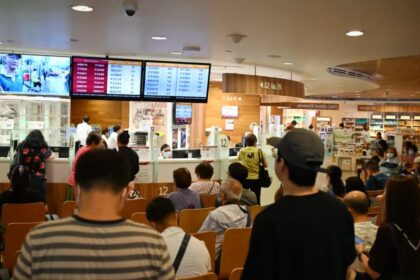Japan’s Vintage Apparel Craze: Why Young Shoppers Are Driving a Secondhand Revolution
In the heart of Tokyo’s bustling neighborhoods, a new kind of fashion revolution is underway. Young Japanese consumers are flocking to vintage stores and flea markets, snapping up rare T-shirts, retro jackets, and one-of-a-kind accessories. This isn’t just about nostalgia or quirky style—Japan’s youth are investing in vintage apparel as both a form of self-expression and a savvy financial move, propelling the country’s secondhand market to unprecedented heights.
- Japan’s Vintage Apparel Craze: Why Young Shoppers Are Driving a Secondhand Revolution
- What’s Behind the Vintage Boom?
- Where the Trend Lives: Tokyo’s Vintage Hotspots
- How Social Media and Youth Culture Fuel the Trend
- Vintage as Investment: The Economics of Rarity
- Sustainability and the Global Context
- Challenges and Critiques: Is Vintage Fashion for Everyone?
- Beyond the Hype: The Cultural Significance of Vintage in Japan
- In Summary
According to the Reuse Economic Journal, the value of Japan’s secondhand goods market soared to approximately 3.13 trillion yen (about $21.3 billion) in 2023, marking the 14th consecutive year of growth. The trend is most visible in the fashion sector, where vintage T-shirts and other apparel are commanding prices that would have been unthinkable just a decade ago. At Tokyo’s famed Awesome by Bring Harajuku store, for example, a 1990s T-shirt featuring the iconic anime film Akira recently sold for a staggering 790,000 yen—more than 250 times its original price.
What’s Behind the Vintage Boom?
Several factors are fueling Japan’s vintage apparel craze. Economic uncertainty, changing attitudes toward sustainability, and the desire for individuality all play a role. For many young people, buying vintage is a way to invest in items that retain or even increase in value, rather than spending on fast fashion that quickly loses its appeal.
Arisa Tanii, a digital planner at advertising giant Dentsu Inc. and an expert in youth consumer behavior, explains that fashion is more than just clothing for Japan’s younger generations.
“While fashion is a tool for self-expression, young people may also be drawn to the investment benefits of vintage clothes given anxiety about their economic prospects,”
she notes. The uncertainty of the future, from job security to inflation, makes the idea of owning something with lasting value especially attractive.
But it’s not just about economics. Vintage fashion offers a sense of uniqueness and authenticity that mass-produced clothing can’t match. Each item tells a story—whether it’s a faded band tee from the 1980s or a denim jacket with a distinctive patina. As 38-year-old collector Susumu Takahashi puts it,
“The vintage item has a story, and even if I wear it or it tears, it has value. If I stop using it, I might sell it.”
Where the Trend Lives: Tokyo’s Vintage Hotspots
Tokyo is the epicenter of Japan’s vintage fashion scene, with entire neighborhoods dedicated to secondhand shopping. Areas like Shimokitazawa, Koenji, Harajuku, and Kichijoji are renowned for their eclectic mix of vintage boutiques, thrift chains, and flea markets. Each district offers its own flavor:
- Shimokitazawa: Known for its hip cafes and indie shops, this area is a treasure trove for all things secondhand, from clothing to vinyl records.
- Koenji: An artsy hub with a vibrant alternative music scene, Koenji’s alleys are packed with unique vintage stores and shotengai (covered shopping streets).
- Harajuku: The heart of youth fashion and cosplay culture, Harajuku’s Takeshita Street is lined with chic secondhand shops and quirky boutiques.
- Kichijoji: Balancing urban life with nature, Kichijoji offers vintage stores alongside shopping streets, bars, and cafes.
Popular thrift store chains such as Tanpopo House, MODE-OFF, BAZZSTORE, KINJI, and 2nd STREET cater to a wide range of budgets and tastes. Some specialize in American and European vintage, while others focus on Japanese brands from the 1980s and 1990s. For those seeking designer labels at a discount, RagTag and KOMEHYO offer carefully curated selections of high-end secondhand fashion.
The Flea Market Phenomenon
Beyond brick-and-mortar stores, Tokyo’s flea markets are a vital part of the vintage ecosystem. The Ohi Racecourse Flea Market (Tokyo City Flea Market) is one of the largest, with up to 600 vendors selling everything from clothes and electronics to antiques and fossils. Markets like the Machida Tenmangu Antique Fair, Hanazono Shrine Antique Market, and Oedo Antique Market attract bargain hunters and collectors alike, offering a chance to discover hidden gems at affordable prices.
How Social Media and Youth Culture Fuel the Trend
Social media platforms play a pivotal role in the vintage apparel boom. Young shoppers often share their latest finds on Instagram, TikTok, and Twitter, turning rare T-shirts and jackets into viral sensations. This digital word-of-mouth not only drives demand but also creates a sense of community among vintage enthusiasts.
Staygold Inc., a Tokyo-based company operating multiple vintage retailers, observes that many young people splurge on luxury vintage items with income from part-time jobs, then resell them to fund their next purchase. This cycle of buying, showcasing, and reselling is a hallmark of the modern secondhand market, blurring the lines between consumer and collector.
Online platforms and apps have also made it easier than ever to buy and sell vintage clothing. Major brands are launching their own secondhand initiatives, and curated online marketplaces offer everything from streetwear to designer pieces. This digital transformation has expanded the reach of vintage fashion beyond Tokyo, making it accessible to young people across Japan.
Vintage as Investment: The Economics of Rarity
One of the most striking aspects of Japan’s vintage boom is the willingness of young shoppers to pay premium prices for rare items. The value of a vintage T-shirt, for example, can skyrocket based on factors like rarity, condition, and cultural significance. A shirt featuring a classic anime or a legendary band can fetch hundreds of thousands of yen if it’s in good condition and has a compelling backstory.
Yuki Shimizu, the 25-year-old manager of Awesome by Bring Harajuku, explains that even imperfections can add to an item’s value.
“Individual differences in items such as faded or cracked prints can even increase their value,”
she says. This appreciation for uniqueness and authenticity sets vintage fashion apart from mass-produced clothing, where uniformity is the norm.
For many young Japanese, vintage apparel is more than just a fashion statement—it’s an asset. Items can be worn, enjoyed, and then resold, often at a profit. This investment mindset is particularly appealing in an era of economic uncertainty, where traditional forms of saving and investing may seem less accessible or reliable.
Sustainability and the Global Context
The rise of vintage fashion in Japan is part of a broader global movement toward sustainable consumption. By choosing secondhand clothing, young shoppers are reducing waste, conserving resources, and challenging the fast fashion industry’s throwaway culture. This shift is echoed in other countries, from India’s rapidly growing secondhand apparel market to London’s cult vintage shops like Twos, which serve as community hubs for fashion-forward youth.
In India, for example, the secondhand apparel market was valued at around $3.5 billion in 2024 and is expected to grow at over 13% annually. Young consumers are drawn to the affordability, durability, and environmental benefits of pre-owned clothing, with online platforms and social media driving the trend. Similarly, in London, vintage shops like Twos have become gathering places for creative communities, offering curated collections that blend rare finds with independent designer pieces.
Japan’s vintage scene is also influencing international markets. Stores like Takara House in Singapore source much of their inventory from Japan, offering unique apparel and collectibles to a global audience. This cross-border exchange highlights the growing appeal of Japanese vintage culture and its impact on fashion trends worldwide.
Challenges and Critiques: Is Vintage Fashion for Everyone?
While the vintage boom has brought excitement and opportunity, it’s not without its challenges. Prices at popular Tokyo vintage stores can be steep, putting some items out of reach for budget-conscious shoppers. Sizing can also be an issue, as many vintage clothes are tailored for smaller frames, reflecting the body types of previous generations.
Moreover, the popularity of vintage fashion has led to increased competition for rare items, with some collectors and resellers driving up prices. This has sparked debates about accessibility and the true sustainability of the trend, especially as demand grows both domestically and internationally.
Despite these concerns, the overall impact of the vintage movement remains positive. By extending the life cycle of clothing and fostering a culture of reuse, Japan’s youth are challenging the norms of disposable fashion and setting an example for sustainable consumption.
Beyond the Hype: The Cultural Significance of Vintage in Japan
Vintage fashion in Japan is more than just a trend—it’s a reflection of deeper cultural values. The concept of mottainai, which expresses regret over waste and encourages the careful use of resources, underpins much of the country’s secondhand culture. Flea markets like the Mottainai Flea Market embody this ethos, offering affordable goods and promoting the idea that nothing should be discarded without thought.
For many young Japanese, vintage shopping is also a way to connect with the past and express individuality in a society that often values conformity. The act of hunting for unique pieces, whether in a crowded market or a hidden boutique, becomes a form of creative exploration and personal storytelling.
As one Tokyo-based fashion enthusiast explains,
“You never know what you’ll find. Each piece has its own history, and wearing it lets you become part of that story.”
In Summary
- Japan’s secondhand apparel market reached 3.13 trillion yen in 2023, driven largely by youth interest in vintage fashion.
- Economic uncertainty, sustainability concerns, and the desire for unique self-expression are key factors behind the trend.
- Tokyo’s neighborhoods like Shimokitazawa, Koenji, and Harajuku are hotspots for vintage shopping, with a mix of boutiques, chains, and flea markets.
- Social media and online platforms amplify the trend, enabling young people to buy, sell, and showcase rare finds.
- Vintage apparel is seen as both a fashion statement and an investment, with rare items fetching high prices.
- The movement reflects broader global shifts toward sustainable consumption and has influenced markets beyond Japan.
- Challenges include high prices and limited sizing, but the overall impact is a more sustainable and creative approach to fashion.












